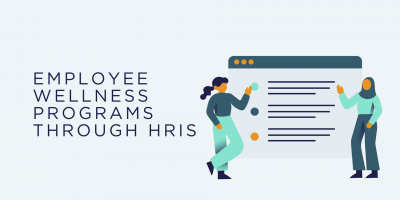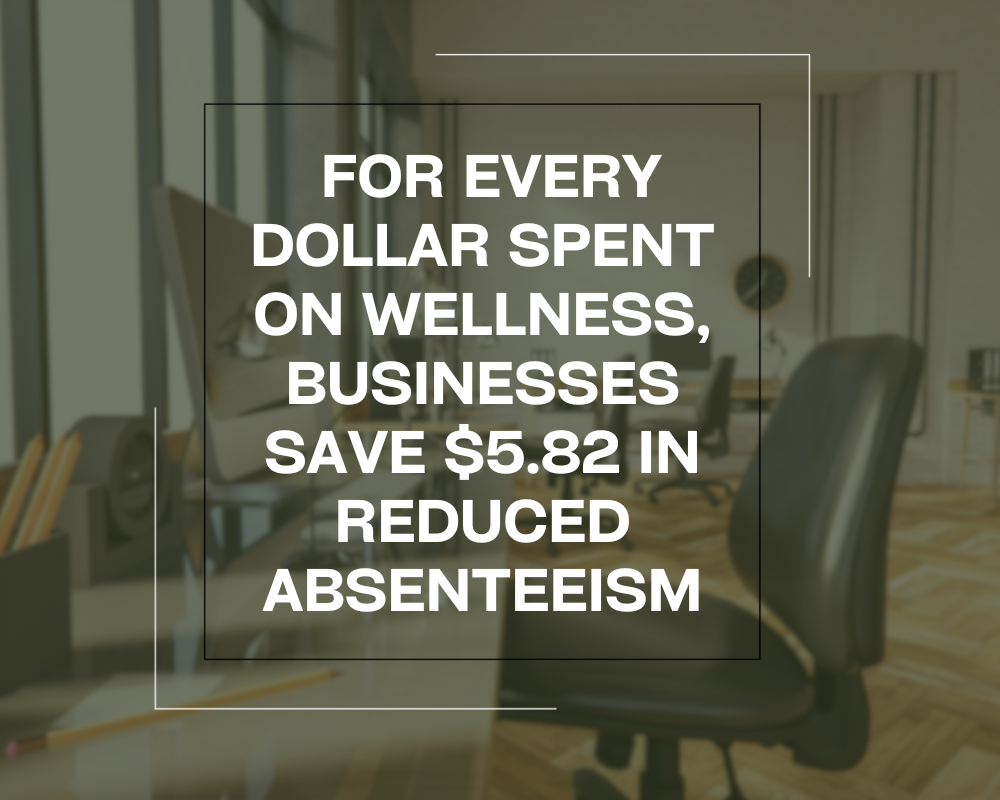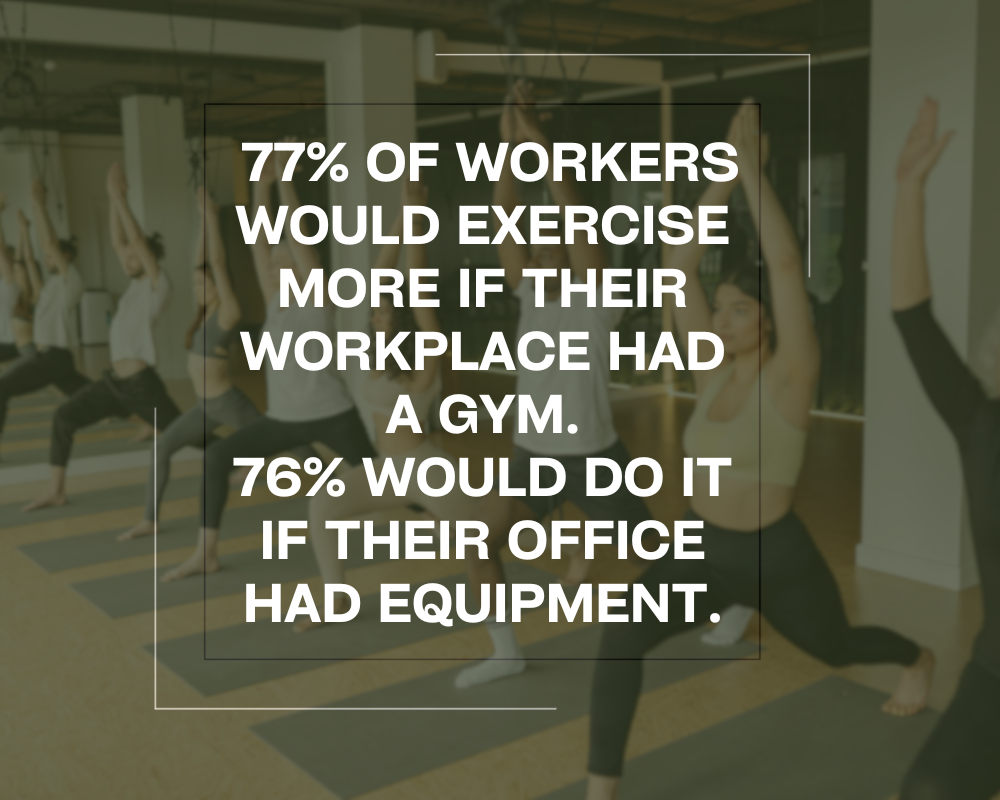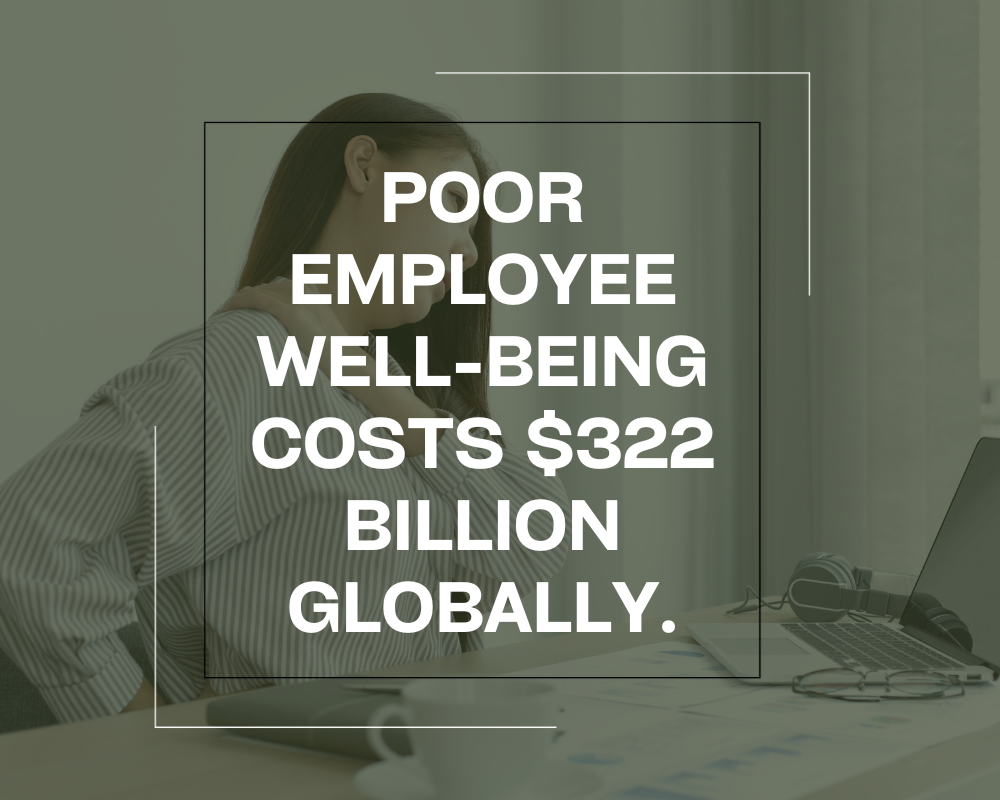
Employee Wellness Programs through HRIS
In the intersection of HR technology and employee wellness programs, companies have found ways to maximize their benefits and those of their employees.


HR & Operations Director at First Aid at Work Course

CEO & Founder at Sensate
From healthier habits to financial gains, a corporate fitness challenge can benefit the workplace in many ways.
It can increase productivity, reduce absenteeism, and make your employees happier.
Thus, no matter what companies decide on, whether it be fitness classes, virtual exercises, walking programs, or team challenges, these are all dynamic and inclusive ways to enhance physical activity, boost employee collaboration, and create a culture of wellness.
So how can employers implement them in the workplace?
A corporate fitness challenge is a wellness initiative that promotes better employee health through physical activity.
With empirical evidence linking workplace well-being with productivity, job satisfaction, and lower healthcare costs, its benefits expand beyond the workforce and to the organization.
For example, wellness statistics reveal that more than two-thirds of employers prioritize well-being as a business objective. As to why they do it, the reasons range from benefiting their employees to financial gains, or:
Beyond the numbers, workplace fitness challenges, at their core, bring teams together.
They provide a mutual goal, like collectively achieving a specific number of steps or minutes of exercise, creating a sense of unity.
Although this largely depends on the type, corporate fitness challenges generate stronger employee connections through collaboration or positive competition.

Well-being is a broad term encompassing anything from mindfulness and meditation to nutrition and exercise.
Corporate fitness is just one aspect of it.
Based on the organization’s goals and the preferences of employees, the types of fitness challenges can significantly differ.
For example, for a company where employers have predominantly sedentary jobs, a step challenge could be an excellent solution to improving health. On the other hand, employers with remote workers would benefit more from virtual exercise challenges.
“As the CEO of a previous company that developed fitness tech, it was important that we walked the walk and instilled an interest in, and understanding for, creating fitness habits,” says Anna Gudmundson, now the CEO and Founder of Sensate.
“We chose to do fitness activities very openly in the workplace, including a variety of challenges, such as wall sit, plank, water intake, etc., to ensure that anyone could participate in at least some of them.
Importantly, participation was more celebrated than winning, to create a team connection rather than competition and a single winner,” adds Gudmundson.
However, she also explains that the priorities have shifted now, introducing a need for a different approach.
“At Sensate, the company where I currently serve as CEO, we develop wellness tech especially to reduce stress and increase relaxation. We interact with people who suffer from a lot of anxiety and health hackers who want to optimize their nervous system.”
To better understand how companies can choose and implement the right fitness challenge, let’s begin by reviewing the most common types.

According to Better Health Channel, walking for 30 minutes per day can improve cardiovascular health and boost muscle power and endurance. At the same time, it decreases the risk of developing heart disease, diabetes, osteoporosis, and even some cancers.
Weighing in the diversity of the workforce, step challenges are some of the most common ones since they can adhere to different levels of physical activity. They usually require pedometers or fitness trackers to monitor employees’ daily step counts.
As a challenge, walking programs encourage friendly competition since participants compete to achieve the highest step count and increase physical activity.
Fitness classes offer more diversity.
They can be on-demand or on-site, and their intensity ranges between beginner-friendly and advanced.
For example, classes can include yoga and Pilates or high-intensity interval training (HIIT) sessions.
As a workplace challenge, they aim to incentivize employees to attend the organization’s fitness classes. In fact, research on in-office workouts shows that 77% of workers would exercise more if their workplace had a gym, and 76% would do it if their office had equipment.

This type of fitness challenge encourages collaboration while working collectively towards a goal.
“Both the team challenges we choose and how we implement them have great impact on team culture,” states Anna Gudmundson.
One method to organize teams is by department.
Alternatively, random pairings can encourage cross-functional relationships, while self-selection empowers employees to form groups based on interests or fitness levels.
Beyond the approach, the activities can be anything from morning stretches and group sports to running competitions and marathons.
Research shows that 66% of organizations plan to prioritize health and well–being programs supporting remote workers by 2024.
Especially relevant in the era of remote work, virtual challenges allow employees to participate from anywhere. They can be individual or collaborative, and participants can join virtually through fitness tracking apps, video conferencing, or other online platforms.



According to Gallup, poor employee well-being costs $322 billion globally.
It’s also the reason behind 75% of medical expenses resulting from a preventable condition.
Promoting physical activity as part of a wellness initiative in the workplace is one way to address these challenges.
A study by Aflac shows that 61% of employees make healthier lifestyle choices because of their company’s wellness program, while more than half of employers agree the service reduced their health care costs.
To ensure effectiveness, companies can follow these steps when they decide to launch a corporate fitness challenge.

Step one is understanding what employees need.
Considering how diverse the workforce is, every employee will likely have different expectations. Hence, before implementing an activity, it’s essential to assess workers’ needs, interests, health concerns, and fitness levels to make it inclusive.
Getting this data requires conducting wellness surveys and narrowing down which fitness challenges you can introduce.
“Drawing from experience, crucial elements in the success of corporate fitness challenges are an inclusive design, one that accommodates various health statuses and fitness levels,” says Derek Bruce, HR and Operations Director at First Aid at Work Course.
“However, we circumvented this issue by ensuring our wellness challenge accounted for different histories and levels of fitness. We succeeded in creating an all-inclusive environment,” he explains.
Wellness surveys can give an insight into employees’ health and preferences, ensuring the choice is engaging and aligns with their wellness goals.
Derek Bruce explains that collaborating with the workforce on the challenge is critical.
“Its benefits can motivate employees to participate—if they perceive it as genuinely promoting their well-being. This is vital to ensure broad participation.“
All things considered, the questionaries should include open-ended questions allowing employees to suggest corporate fitness challenge ideas or choose between alternatives. Also, since they’ll be handling sensitive health data, the surveys can be anonymous to ensure privacy.
After gathering insights and ideas, the next step is to define who will be involved in planning and execution and their roles and responsibilities.
Usually, the HR department forms a wellness committee with representatives from different departments that take over logistics and communication. These designated members also work together to develop the goals, activities, and employee incentives, ensuring smooth program implementation.
The involvement of leaders and managers in these committees can inspire others to participate.
Research shows that senior management support and commitment to well-being initiatives helped 73% of workers develop healthy lifestyles, against 11% without leadership support.
Investing in employee well-being can benefit businesses in the long run, especially when the goal aligns with the organization’s expectations.
For example, if the company aims to improve collaboration and communication, it can introduce a group fitness challenge. These team activities can be anything from group marathons to collectively accumulating steps over a set period for an incentive.
Remember that the final decision should also reflect the employee assessment, aligning everything together – their expectations, the organizational objective, and the fitness challenge goal.
Leveraging technology with well-being initiatives is especially prevalent nowadays.
According to KFF, 61% of large companies include digital content in their wellness programs. Among those that do, 47% said that their employees were largely or somewhat engaged.
As part of this digital wave, corporate fitness challenge apps offer many benefits for employees and employees. They simplify running a health initiative in the workplace, facilitate easy registration, track participants’ progress, and encourage active engagement.
Thus, choosing the right fitness tracker app is one of the most integral steps in launching a fitness challenge.
Beyond its cost and value, other aspects to consider are the app’s features and functionalities, whether it supports fitness trackers, and how well it integrates with the company’s wellness goals and initiatives.
Since it’s a fitness challenge, it should have a specified duration or start and end date. Moreover, setting milestones in between can help engage participants and integrate the challenge into their daily routines.
The wellness committee oversees these activities and events and decides on the best timelines and schedules for maximum participation by weighing employees’ workload, vacation, etc.
The next step includes developing clear rules for work fitness challenges, and rule number one is not to force employees to take part.
Participation should be voluntary, with guidelines on joining the challenge, tracking progress, and earning points.
These comprehensive guidelines also determine the incentive for participation and potential penalties for violation of the rules.
A mistake to avoid is making the rules overly complex, which could deter people from participating.
Promotion depends on the type of challenge, but its goal is to generate engagement and motivate employees to participate.
For example, HR can send emails with necessary information, use group chats, make office posters and other marketing materials, etc. Their goal is to highlight the benefits and positive impact of the challenge, personally and professionally.
Once the challenge is in place, regularly monitor participants’ progress and be prepared to adjust if necessary.
If implemented, HR can use the fitness challenge app data to track engagement, identify trends, and address any challenges that may arise during the competition.
As an HR and operations director, Derek Bruce explains that corporate fitness challenges, akin to any program, encounter obstacles.
“Participation rates may decline owing to dwindling interest or commitment. In response to this, we deployed a strategy of friendly competition—on both an individual and departmental level—and tendered incentives for continuous involvement, thus creating a solution which entices consistent participation.”
That brings us to the next and final step – incentives or how to increase interest and commitment for the best results.
Creating healthier habits in itself is an incentive.
However, as part of the promotion process, deciding on the corporate fitness challenge prize ideas is an integral step for a successful launch and an excellent way to celebrate the completion.
It offers employees recognition and motivates them to stay committed to their goals. When done right, the prize can encourage healthy workplace competition.
Some examples of corporate fitness challenge prizes are travel and gift cards, fitness gear, gym memberships, wellness services, extra vacation days, cash incentives, and more.
“Corporate fitness challenges profoundly impact employee well-being,” says Derek Bruce.
He adds: “By promoting the engagement of employees in fitness activities, these challenges foster healthier lifestyles. Consequently – and this is significant – there are reduced instances of lifestyle-related illnesses; indeed, an undeniable testament to their effectiveness.”
However, for his company, there were also some surprising outcomes.
“While aiming to promote employee health and well-being form the primary goals of corporate fitness challenges, we encountered several surprising outcomes:
Bruce further explains that employee morale experienced a significant boost during the fitness challenges, highlighting many corresponding benefits.
“The structured program, providing a break from regular work routines, made employees feel valued. Consequently, productivity levels surged.
Fitness challenges act as exceptional tools for fostering a supportive and positive corporate culture. They encourage cross-departmental communication, building a robust sense of community and connectedness.
The company, though not immediately perceptible, experienced significant financial benefits. These were predominantly due to a healthier workforce.
Such vitality within the staff resulted in fewer sick leaves taken and lower health insurance premiums over a 24-month period – clear indicators of cost savings for the enterprise,” concludes Bruce.
While the case for this company shows promising insights, it’s essential to understand that the outcome at the end of the challenge depends on many factors, including:
Using these insights to refine future corporate fitness challenges can continue to foster a wellness culture within the organization, contribute to a healthier workplace, and strengthen the sense of community and teamwork among employees.
Disclosure: Some of the products featured in this blog post may come from our partners who compensate us. This might influence the selection of products we feature and their placement and presentation on the page. However, it does not impact our evaluations; our opinions are our own. The information provided in this post is for general informational purposes only.
Content Writer at Shortlister
Browse our curated list of vendors to find the best solution for your needs.
Subscribe to our newsletter for the latest trends, expert tips, and workplace insights!

In the intersection of HR technology and employee wellness programs, companies have found ways to maximize their benefits and those of their employees.

Embrace employee wellness programs’ significance in employee health and wellbeing.

As sleep deprivation significantly affects work performance, is the tradeoff between employees working long hours or being available 24/7 worth it?

When a major player like Bravo announces its exit from the wellness space, it leaves many employers scrambling to find a replacement. Which providers should you choose?
Used by most of the top employee benefits consultants in the US, Shortlister is where you can find, research and select HR and benefits vendors for your clients.
Shortlister helps you reach your ideal prospects. Claim your free account to control your message and receive employer, consultant and health plan leads.